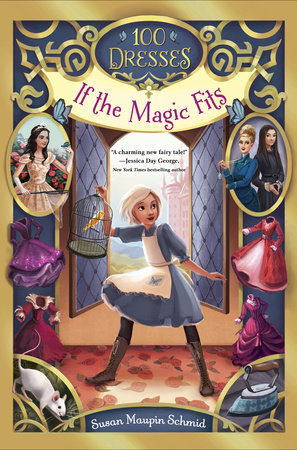How Mother-Daughter Book Clubs Can Help Girls (and Moms!) Find Their Voice
by Susan Maupin Schmid
I love books; I’m addicted to stories. So when my fourth-grade daughter received an invitation to join a Mother-Daughter book club, I was thrilled. Read a book every month and discuss it — over dessert! What could be more enticing? The club met from September to May, with moms taking turns hosting. One innovative mom served a candy feast based on that month’s book, Julie Andrews Edwards’s The Last of the Really Great Whangdoodles, that included a plate of maple nut goodies labeled “Wodge.”
Fun books, lively debates, scrumptious desserts … but the group soon hit a snag. The club relied on 100 Books for Girls to Grow On, by Shireen Dodson, as our resource for discussion questions. What to do about books that the group wanted to read, but weren’t included? Mary Mapes Dodge’s Hans Brinker, or the Silver Skates, one mom’s childhood favorite, posed the first such challenge. Since it was my turn to host, I ambitiously offered to devise the questions.
Hans Brinker was published in 1865, when novels for children were new. Consequently, it told a slight tale, interrupted by a long history of Holland. It taught me the most important rule about book clubs: CHOOSE A DISCUSSABLE BOOK! Ultimately, I teased questions out of the book by focusing on the Brinker family and posing lots of “Why do you think this happened” or “Why do you think they did that?” Centering the discussion on the characters, rather than the almost non-existent plot, created one of the best discussions the group had had.
From then on, until the group disbanded at the end of the girls’ junior year in high school, I served as the designated writer of questions. A thrill and a challenge! And the source of other mother-daughter book club insights:
Value every girl’s opinion. When one girl reluctantly admitted that she hadn’t liked that month’s book, I told the girls that they didn’t have to like every selection, but they should read each one. And if they didn’t enjoy a book, they should come and tell the rest of us why they didn’t. After that, the girls were quicker to voice their opinions, to be more open and honest. There were no right or wrong answers at book club.
Give each girl a voice. One girl always volunteered her thoughts, while others seldom spoke. So every month, I assigned each girl her own question. That meant she had to come prepared to speak and also gave her the group’s undivided attention. Over time, even the most hesitant girl became poised and confident.
Choose everyone’s favorite. A mom’s request that the group focus on mysteries because they were her daughter’s favorite sparked a heated debate on what to read. One mom insisted on classics, another contemporary reads, and yet another voted for fantasy. In the end, I asked each girl to name her favorite genre and assigned one month to each. That way every girl read her favorite kind of book at least once during the year.
Make the girls think. Questions always included two favorites: “Who was your favorite character?” and “What did you like or dislike most about this story?” My intention was to ask questions that focused on the reader’s experience, but I was also sneaky, sliding in questions that introduced literary concepts like red herring or foreshadowing. By doing so, the girls became sharper readers, noticing the authors at work in their stories.
And joining a mother-daughter book club taught me something: Stories are important. And stories are meant to be shared. The books gave each girl a voice as they shared their insights, hopes, and ideas with the group. Listening to what the girls liked and didn’t, to what they thought, felt, and wished for in stories, gave me insights that carried into my own writing. I created a character, Darling Dimple, whose wild imagination and gift for storytelling helped me to find my voice.
And to give Darling hers.

